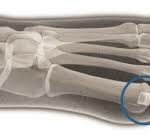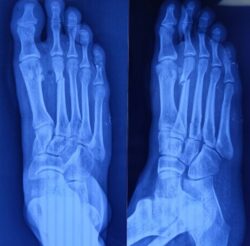A Step-by-Step Guide to Filing a Cartiva Lawsuit
In recent years, the health sector has witnessed a mounting number of Cartiva lawsuits. These lawsuits primarily originate from individuals affected by alleged complications linked to the Cartiva synthetic cartilage implant and are seeking legal recourse. This guide aims to shed light on the procedural aspects of filing such a lawsuit and assist potential claimants in navigating the complex legal landscape. Understanding the process is fundamental, as it equips those affected with knowledge of their rights and the legal options available to them.

Understanding Cartiva Implants and Associated Issues
Cartiva is a synthetic cartilage implant, introduced to the medical market with the aim of alleviating joint pain, particularly in the big toe. Despite initial optimism, various problems associated with Cartiva implants soon surfaced, propelling a surge in lawsuits against Wright Medical, the manufacturer. These lawsuits typically encompass an array of claims, including negligence, misleading advertising, design and manufacturing defects, inadequate risk disclosure, and personal injury claims. By scrutinizing existing lawsuits and their basis, potential claimants can better understand the implications of their own situations and the potential for a successful lawsuit.
Initial Steps: Recognizing and Documenting Your Case
Initiating a Cartiva lawsuit begins with recognizing and documenting any complications or adverse symptoms experienced post-Cartiva implantation. Accurate and comprehensive medical records play an indispensable role in corroborating these symptoms and establishing a solid case. Seeking a comprehensive evaluation from a medical professional can help confirm the issue and provide necessary medical evidence to link your complications to the Cartiva implant. This step is vital in formulating a compelling case.
Finding a Skilled Medical Device Lawyer
Navigating the complexities of a Cartiva lawsuit necessitates the expertise of a lawyer specialized in medical device lawsuits. A seasoned lawyer brings a wealth of knowledge and experience, ensuring a thorough understanding of the intricacies of these cases, current legal developments, and effective advocacy on your behalf. Identifying the right lawyer involves careful consideration and usually involves setting up initial consultations to discuss your case. These consultations enable the lawyer to gain insights into your specific situation, provide advice, and potentially lay the groundwork for a successful lawsuit.
Evaluation of Your Case
Once you have legal representation, your lawyer will embark on an in-depth evaluation of your case. They will scrutinize the available medical evidence, assess the severity of your complications, and consider the context provided by the existing body of Cartiva lawsuits. Understanding the potential outcomes and litigation strategies that emerge from this evaluation is crucial in managing expectations and mentally preparing for the legal journey ahead.
Filing the Lawsuit
Following the case evaluation and the formulation of a legal plan, your lawyer will proceed with filing the Cartiva lawsuit. This filing details your specific claims, outlines the damages incurred, and seeks appropriate remedies. The process of filing a lawsuit is complex and can be time-consuming, but understanding potential timelines can help manage expectations and ensure preparedness for the stages ahead.
The Discovery Phase
The discovery phase is an integral part of the litigation process, where both parties gather pertinent information related to the lawsuit. It's a procedural mechanism designed to prevent surprises during the trial, allowing both parties to know what to expect. During this phase, you may be required to provide further information, present a comprehensive medical history, or participate in depositions. Your cooperation and transparency during this phase can significantly influence the progress and ultimate outcome of your case.
Settlement Discussions or Trial Preparation
As the case advances, there may be an opportunity for settlement discussions. These discussions attempt to reach an agreement that resolves the lawsuit without proceeding to a full trial. If a fair settlement is not reached, the focus shifts towards preparing for trial. The decision to settle or proceed to trial is a strategic one, based on multiple factors, and should be made with the guidance of your legal counsel.
Trial Phase
In the event a trial is necessary, both sides will present their case in front of a judge or jury. Your lawyer will represent your interests, present the gathered evidence, and argue on your behalf. Trials can be unpredictable and vary in length, but understanding what to expect can provide some measure of comfort and preparedness.
Post-Trial Phase
Following the trial, several outcomes are possible, depending on the court's judgment. If the decision is in your favor, the compensation awarded will be determined, providing some redress for the damages incurred. Alternatively, if the decision does not favor your case, there could be potential for an appeal, depending on the specific circumstances and advice of your legal counsel.
File Your Lawsuit
Filing a Cartiva lawsuit is a rigorous process that requires legal expertise and patience. Understanding this process is crucial as it can equip those affected by Cartiva implants to effectively navigate the legal landscape. Additionally, it underscores the importance of staying informed, gathering and preserving sufficient evidence, and seeking professional legal advice. Armed with this knowledge, potential claimants can embark on their legal journey with a greater sense of confidence and preparedness.
If you need assistance filing a legal claim related to a Cartiva implant, you can reach an attorney by using the contact form on this page.



